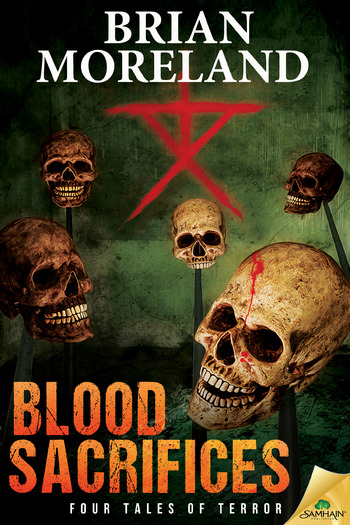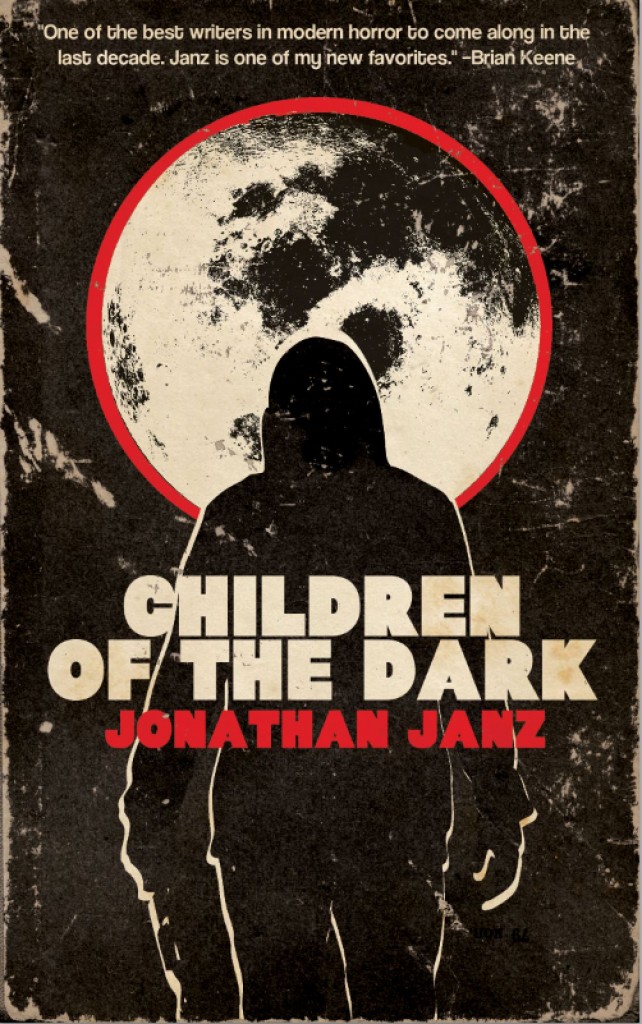This week on The Scariest Part, my guest is author Brian Moreland, whose latest collection is Blood Sacrifices. Here’s the publisher’s description:
Some evils require sacrifices.
From the author of Dead of Winter and The Devil’s Woods come four tales of blood-tingling horror:
The Girl from the Blood Coven
In this short prequel to “The Witching House,” when Abigail Blackwood claims her hippy commune family has been massacred, Sheriff Travis Keagan and his deputies investigate. They discover there’s more than weed smoking going on at Blevins House. Much more.
The Witching House
Sarah Donovan is scared of just about everything, but she helps her adventurous boyfriend investigate the old, abandoned Blevins House, scene of a forty-year-old unsolved massacre. Little do they know the house is hungry for fresh prey…
Darkness Rising
When Marty Weaver encounters three killers who like to play sadistic games with their victims, his own scarred past is unearthed. And when his pain is triggered, blood will flow…and hell will rise.
The Vagrants
Beneath the city of Boston, evil is gathering. While living under a bridge with the homeless, journalist Daniel Finley witnessed something that nearly cost him his sanity. Now, with a book published about the experience, he’s caught between the Irish mafia and a deranged cult preparing to shed blood on the street.
And now, let’s hear what the scariest part was for Brian Moreland:
Blood Sacrifices is a collection of three novellas and one short story inspired by two of my favorite authors, H.P. Lovecraft and Clive Barker. I love how both authors create feelings of dread with their prose and fill their stories with fantastic monsters, ancient gods, and a sense that there are other realms beyond the ones we can see. Each story in my collection is about ordinary people encountering extraordinary horrors that come from alternate realms, especially “Darkness Rising” and “The Vagrants.” And each story has at least one scene that frightened me as I wrote the scene.
In the opening short story “The Girl from the Blood Coven” and its novella sequel, “The Witching House,” what started out as a haunted house story turned into something more when I began to discover the mysteries of what made the house haunted. It began in 1972, when a coven of witches were murdered inside the three-story rock house. Sheriff Keagan and his deputies are the unfortunate souls who have to investigate the house that had once been a hippy commune, isolated in the backwoods of East Texas. If you were to drive through some of that thick pine country, just some of the country roads are scary enough, and so are the people who live deep in the pines. What Sheriff Keagan discovers inside the Old Blevins House gave me chills as I wrote the story.
“The Witching House” takes place forty years after the massacre. Sarah Donovan, her new boyfriend, Dean, and a married couple, Meg and Casey, are members of an urban exploring club that likes to explore abandoned haunted buildings. When they hear that the Old Blevins House has been boarded up for decades, they decide it would be fun to break in and explore it. What they soon discover is that the house is more than just a little haunted. There’s something living down in the basement that’s hungry for human blood.
Now, the basement has always been a scary place for me. There’s an otherworldly feeling I get when I go underground or inside a tunnel. When I was younger I was afraid of the dark and claustrophobic, while at the same time being a curious explorer who liked to scare myself for the adrenaline rush. I once explored the water drainage pipes that ran beneath the neighborhood. I crawled on all fours through a maze of tunnels through pitch darkness, spider webs, with all my fears of death prodding me along. I ended up crawling out of a sidewalk drain about a mile away from where I started. I also enjoyed walking through abandoned houses, especially ones with basements, even though they spooked me.
I remember visiting a house with a basement that had a dirt floor, and there was something creepy about going down those slatted steps into that dark, cave-like cellar. That basement inspired the scenes that I wrote for my two witch stories and “Darkness Rising.” And my exploration of urban tunnels inspired the abandoned subway tunnel scenes beneath Boston that I wrote for “The Vagrants.”
For me, one the scariest parts of Blood Sacrifices is when the characters go down underground. At one point in “The Witching House,” Casey and Meg get separated and Casey goes looking for her in the basement. Here’s an excerpt:
The cellar smelled earthy, like a creek after a heavy rain. At the bottom was a dirt floor. White mushrooms clustered in the corner. Casey’s hiking shoes sank into damp, black soil that hadn’t seen sunlight in over a century. He saw fingers moving in the dirt, and his breath caught in his throat. It was an illusion brought on by a sudden fear. The fingers were actually earthworms poking their heads out to observe this giant intruder.
Casey stepped over them and ventured into the gloom. There was a chill down here that prickled his skin. A few cold drops dripped onto his neck and rolled down his back, making him shiver. Tilting his headlamp up, Casey saw beads of dampness clinging to the ceiling. The wood overhead was covered in a skin of black mold. Spores of the stuff floated in the air; he inhaled them, tasted the blight on his tongue. Another drop of moisture struck his forehead and ran stickily down his cheek. He wiped away the scourge and moved on, eager to find his bare-skinned nymph.
The basement was as pitch-black as any underground cave. Impossible to tell how far it went. The more he pressed, the more he kept finding dark upon dark. There seemed to be nothing down here except dirt and mushrooms and moss-covered walls. The deeper Casey walked, his mind kept going back to the witches who had vanished in this house. A question burrowed at the back of his brain: If all the cult members were murdered, who killed them?
Casey will soon discover the answer to that question. Inside the basements of abandoned houses and old buildings of the stories that make up Blood Sacrifices, I tapped into my fears of the dark underground places that can lead us to other worlds where fantastic horrors have been waiting for us to enter.
Brian Moreland: Website / Blog / Twitter / Facebook
Blood Sacrifices: Amazon / Barnes & Noble / Samhain Publishing
Brian Moreland is a best-selling and award-winning author of novels and short stories in the horror and supernatural suspense genre. In 2007, his novel Shadows in the Mist, a Nazi occult thriller set during World War II, won a gold medal for Best Horror Novel in an international contest. The novel went on to be published in Austria and Germany under the title Schattenkrieger. Shadows in the Mist, Dead of Winter, and The Devil’s Woods are his currently available novels, as well as his Kindle short-story The Girl from the Blood Coven and the novella it led into called The Witching House. Now, he has released the full-length The Devil’s Woods. His novella, The Vagrants, was released in 2014, and another, Darkness Rising, in 2015. He loves hiking, kayaking, watching sports, dancing, and making guacamole. Brian lives in Dallas, Texas where he is diligently writing his next horror novel. When not working on his books or books for other writers, Brian edits documentaries and TV commercials around the globe. He produced a World War II documentary in Normandy, France, and worked at two military bases in Iraq with a film crew.





